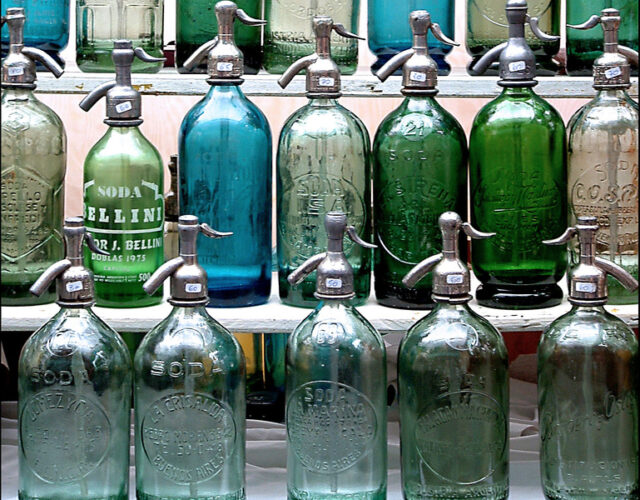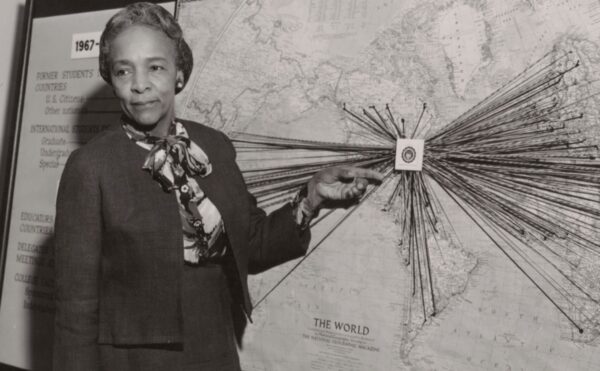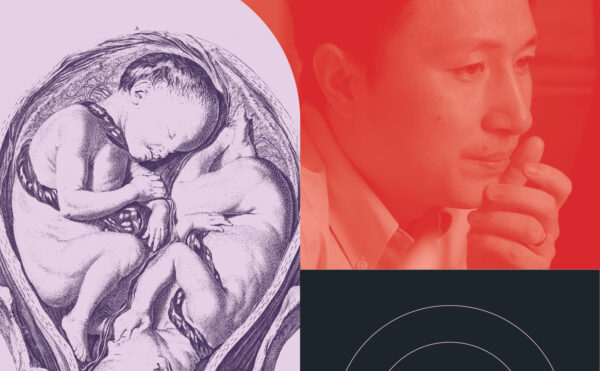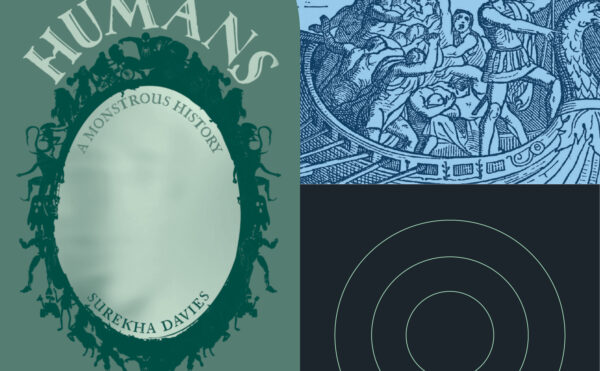We all know hydration is important to health, but many people find water boring to drink. Juice and Coke aren’t boring, but they aren’t very healthy either. One way to transform water into a more exciting drink is to add bubbles. For centuries carbonated water from natural springs was used as a medicine. Now lifestyle and health concerns have combined to drive fizzy water’s renewed popularity.
Join us as we unpack the long history of carbonated water, from natural mineral springs to the invention of artificial carbonation by a radical 18th-century chemist to the fading tradition of seltzer deliverymen in New York City.
Credits
Hosts: Michal Meyer and Bob Kenworthy
Producer: Mariel Carr
Associate Producer: Rigoberto Hernandez
Reporter: Rigoberto Hernandez
Additional Production by Kyrie Greenberg
Music courtesy of the Audio Network
Special thanks to Alex Gomberg and Brooklyn Seltzer Boys
Transcript
Michal: Hello and welcome to Distillations, I am Michal Meyer a historian of science and editor in Chief for Distillations magazine here at the Chemical Heritage Foundation.
Bob: And I am Bob Kenworthy, CHF’s in-house chemist
Michal: We are joined by our associate producer Rigoberto Hernandez. Welcome, Rigo.
Rigo: Happy to be here.
Michal: We all know hydration is very important.
Bob: Yes it is.
Michal: But water is kind of boring.
Bob: Well not to me as a chemist, but I think I see where you’re going.
Michal: Yes, but its sort of plain and taste boring, so you could drink juice or coke but those aren’t very healthy. Or you could make that water less boring.
Bob: A-ha. Like adding carbon dioxide and then you’d have Rigo’s favorite drink.
Rigo: Seltzer.
Bob: Right. The champagne of water. Seltzer, or fizzy water, sparkling water, soda water, club soda —they’re all basically carbonated water—and it’s been around for centuries. But it’s been having quite the comeback in the past several years.
Michal: And it has a rich history. But before we get into the bubbles and the Jewish immigrants on the Lower East Side of New York and the eccentric chemist, Rigo, tell us why you started drinking seltzer and why Americans have been gulping so much of it recently.
ACT 1: The rise of seltzer
Rigo: Sure, but first we start in Germany.
Rigo >>Dialing up a foreign country… — phone rings and Moe Picks up.
Moe >>Hey.
Rigo >>Hey is this Moe?
Moe >>Yes
Rigo >>Hey Moe, how’s it going?
Moe >>It’s nice to talk to you.
Rigo: That’s my friend Moe in Munich. He’s obsessed with seltzer. And he has his own seltzer maker. He has to listen to this sound every time he wants a glass.
Rigo: Germans absolutely love this stuff. They drink more seltzer than any other Europeans. They drink more seltzer than beer, and we know how much Germans love beer.
Moe >>When I go on vacation I order sparkling water. Although it’s not typical for that land. When I’m traveling to Italy or when I was in Thailand I ordered soda water. They looked at me like weird and then okay, he’s German. Must be German. Even Germans are known for that. It’s a cliché but it’s true.
Rigo: Moe drinks about half a gallon of fizzy water a day. I started drinking it myself when I was living in Germany. At first I didn’t like it because it felt like my tongue was burning. But then it grew on me. When I came back to the U.S. in 2014. I couldn’t drink water without bubbles. Luckily a craze for the stuff was starting back home.
Rigo: La Croix is carbonated water from Wisconsin, which is now popular with creative types.
Gary Hemphill >>La Croix is definitely one of the front runners in the ascent of sparkling water categories in the U.S.
Rigo: That’s Gary Hemphill he’s with the Beverage Marketing Corporation, and they track the bottling industry. Sparkling water makes a tiny percentage of all bottled water in the United States – something like three percent. But that percentage has grown at a rate faster than any other type of drink. Depending on what kind of stats you look at, sales of carbonated water have more than double in the past five years.
Gary Hemphill >>Two prime reasons for that but mostly it’s driven by people moving to products that they perceive to be healthier and better for you. But another factor behind that is consumer demand for variety. Addition we think that consumers still have a love for carbonation. For bubbles and so they, in my cases, have moved out of carbonated soft drinks into products that they perceive to be better for them.
Rigo: So Soda’s lost is carbonated water’s win.
Rigo: Remember my friend Moe?
Rigo: Well, he drinks more carbonated water than sweetened soda or any drink because he too is trying to become health conscious.
Moe >>I am overweight too and I started to drink more sparkling water, less sodas, and it’s working really well. Just all the calories you can save by drinking something else. A slice of lemon and some mint inside and you have a nice drink.
ACT 2: Seltzer and Jewish immigrants of New York
Rigo: Even while seltzer is having a comeback, and you can make your own at home, there are still a handful seltzer delivery men in New York, making deliveries in glass bottles.
Alex Gomberg >>Hey Jerry, how are you doing?
Man >>Hey Alex, how you doing?
Alex >>Two cases?
Man >>Please!
Man >>Alright
Gomberg >>My name is Alex Gomberg and I am one of the last remaining seltzer men left in New York. I deliver seltzer to residential buildings as well as restaurants and bars. I am a co-owner of Brooklyn Seltzer boys. We started Brooklyn seltzer boys a couple years ago, which is a delivery company of our family business: Gomberg Seltzer works, which is the last remaining siphon seltzer plant in all of New York. Gomberg Seltzer has been around since 1953. It was started by my great grandfather Moe Gomberg.
Rigo: Jewish immigrants of the Lower East Side were avid drinks of the bubbly water. And a lot of them ended up owning soda fountains and delivering seltzer.
Gomber >> When you look at all the seltzer bottles now a lot of the names that you see on the bottles are Jewish, Teitelbaum and Leibowitz, you know just different Jewish names.. I think majority in the Brooklyn and Manhattan area people were Jewish but they were also Italian too. You know anyone who is living in Brooklyn anyone who is living in Manhattan, because that was a typical product that you would get delivered to your home. You would get milk delivered to your house. You would get seltzer delivered to your house. Seltzer is definitively making a comeback. You hear a lot of studies that say that sodas are not good for you and seltzer is good for you. So you know. There’s no sugar there is no salt in our seltzer. It’s just New York City tripled filtered water and CO2. It’s a healthy drink. America is getting a little more health conscious and seltzer is making a comeback and Brooklyn is coming back in a big way and we are trying to take advantage of that.
ACT 3: The chemistry of seltzer
Rigo: So, there are a lot of terms for bubbly water. And here’s another one: mineral water. Bob, what’s the difference between mineral water and seltzer?
Bob: It really breaks down to where the bubbles come from.
Bob: The gas inside the bubbles is the same. It is all carbon dioxide. In mineral water the bubbles come from natural springs that have dissolved minerals in them, salts and another materials, as well as the carbon dioxide that creates the bubbles. One of these natural materials was seltzer. Named for the town of Selters, Germany. And it is the name that’s associated with carbonated water coming in the modern day. Originally it was from a natural spring but seltzer as we know it today is pretty much water impregnated with CO2. Club soda is basically seltzer. The key difference here is that club soda usually includes potassium bicarbonate and potassium sulfate. That are only there to enhance the flavor.
Rigo: And Bob, what’s going on at a chemical level to make fizzy water.
Bob: The chemical process of carbonated water is quite simple: Carbon dioxide with water creates carbonic acid. This gives water its bubbles.
Bob: the carbon dioxide gas dissolves in water. And it creates something that we have come to call carbonic acid. But it really just is a solution of gas and a liquid. And the solution gives water its bubbles. The more carbon dioxide you can get to stay in the water, by either dropping the temperature or increasing the pressure, the more would be released when the temperature rises or when the temperature is relieved. So as the warm warms up or the pressure is released the excess carbon dioxide bubbles up and it fizzes.
Rigo: Michal, You looked into why people first started to carbonate plain old water. What did you find?
Michal: Well, Moe and Gary Hemphill are on to something. It’s always been about health.
Michal: Go back to Roman times and you’ll find people believed in the healing powers of mineral springs, including the bubbly, carbonated springs. Tumors, skin diseases, joint pain, all could be helped by water from the right spring. The water didn’t even need to taste good. I’ve tasted the waters at Bath, England and I can testify to their disgustingness.
250 years ago doctors would still tell their patients to drink mineral water, even instructing them on how many glasses to drink. And for those who couldn’t afford to travel to the springs or just didn’t have the time? Well, in those cases “entrepreneurs” stepped in, offering artificial mineral water. They would add stuff like Epson salts to ordinary water to make it taste “minerally.” But no one knew how to add bubbles, and the more bubbles, people thought, the healthier the water.
But that all changed in the late 1760s, when a man named Joseph Priestley found himself living next to a brewery. Now Priestley was many things, he was a minister, a political trouble maker, and he was also one of the great scientists of his age. He discovered oxygen. But most of all, Priestley wanted to help ordinary people. Which is where the brewery comes in. Priestley was, as far as we know, the first person to collect the carbon dioxide released by the brewing process and add it to ordinary water. He tasted it the next morning and described it as “pleasant.”
Bob: So how would this help sick people?
Michal: Well, at the time doctors thought some diseases, like scurvy, were caused by what they called putrefaction, what we think of as rot or decay. In severe cases of scurvy, your gums would swell and bleed and your teeth would fall out. Cuts and bruises would never heal. And injuries would reappear. It’s as if your body was decaying.
Now the biggest sufferers of scurvy were sailors on long sea journeys. Up to 50 percent would die from scurvy.
Bob: Why did they think that?
Michal: Carbon dioxide was known to stop decay, so, voila, fizzy water might save sailors. Enter the brilliant Priestley, who in 1772 published a pamphlet with straightforward instructions on how to make his fizzy water, no brewery required.
Bob: Of course, we now know scurvy caused by a pretty extreme vitamin C deficiency, don’t we?
Michal: You can find Priestley’s pamphlet online, I’m going to give you the very short version. Drip a little sulfuric acid on a mixture of chalk and water, and then use a bag to trap the carbon dioxide that fizzes off the chalk. Stick the bag in water and release the carbon dioxide: bubbles! Priestly never made any money off his sparkling water, but someone he knew did, a man named Jacob Schweppes. You might recognize the name. The Schweppes company is still around today.
ACT 4: Health and carbonated water
Rigo: So it’s always been about health. Or rather the perception of health. We started off thinking that carbonated water could cure disease. But then sugar came along and we guzzled soda, and now we’re back to drinking the unsweetened version, because it’s perceived to be healthier. In fact, in 2016, Philadelphia because the largest city in the United States to impose a so tax. The thinking goes that this tax would make people drink less soda
Rigo: So sugary soda is not good for us, but what about plain carbonated water, Bob?
Bob: Depending on whom you ask, carbonated water is unhealthy for you and it’s been blamed for anything from kidney stones to irritable bowl syndrome to tooth decay.
Bob: The one bad health outcome everyone seems to agree on is that the acidity in carbonated water eats away at tooth enamel.
Bob: However in doing research and talking with dentists agree that you would have to drink a lot and over a long period of time for it to eat at your tooth enamel. The sugar in soda is much more damaging for your teeth.
Bob: Again it’s all about the dosage. Eating or drinking too much of anything is a bad thing. You know, drinking too much still water can kill you.
Bob: For Distillations, I am Bob Kenworthy
Michal: And I am Michal Meyer
Rigo: And I am Rigo.
Michal and Bob: Thanks for listening.




